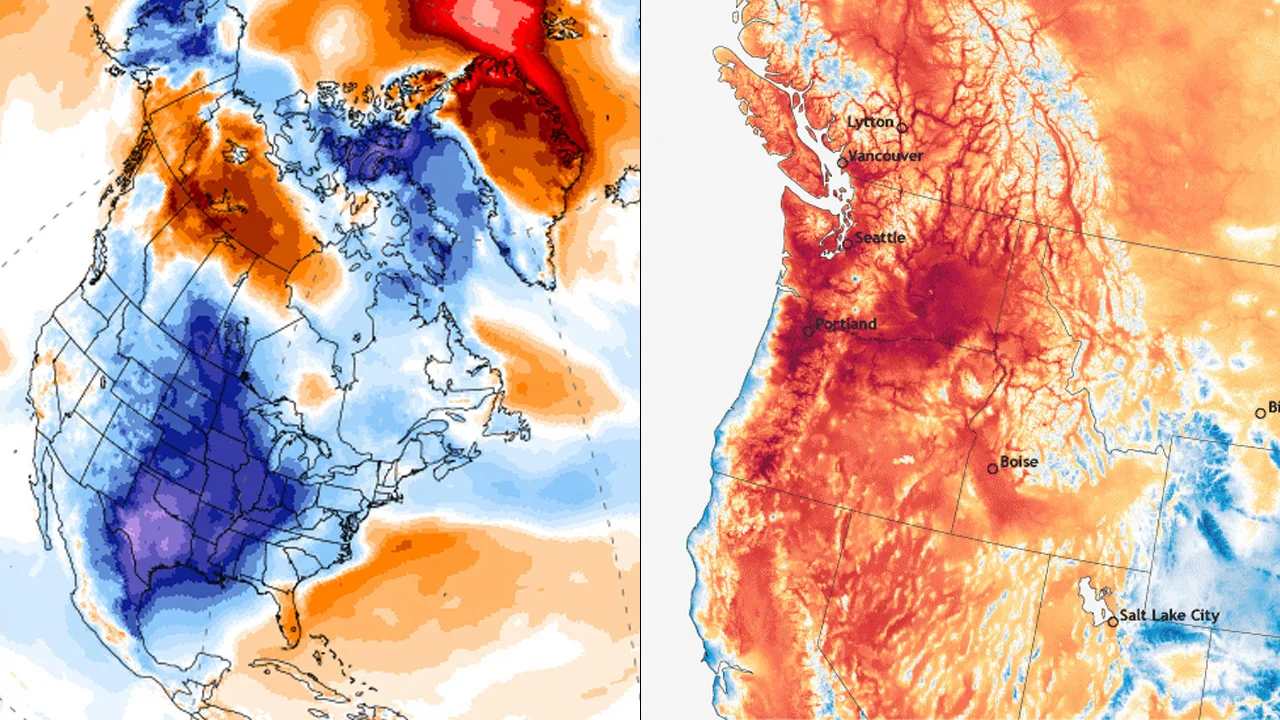
Running cold and hot: Canada's top climate impacts of 2021
Canada suffered through some unprecedented climate extremes in 2021.
The world endured numerous climate extremes in the past year, and Canada was not immune to these impacts.
In 2021, despite continued lockdowns due to the pandemic, the concentration of carbon dioxide and other greenhouse gases reached their highest levels in the atmosphere ever.
On April 30, the Scripps Institution of Oceanography's Keeling Curve logged a daily carbon dioxide value of 420 parts per million. That is the highest daily concentration seen at that site, atop Mauna Loa in Hawai'i, since 1958.
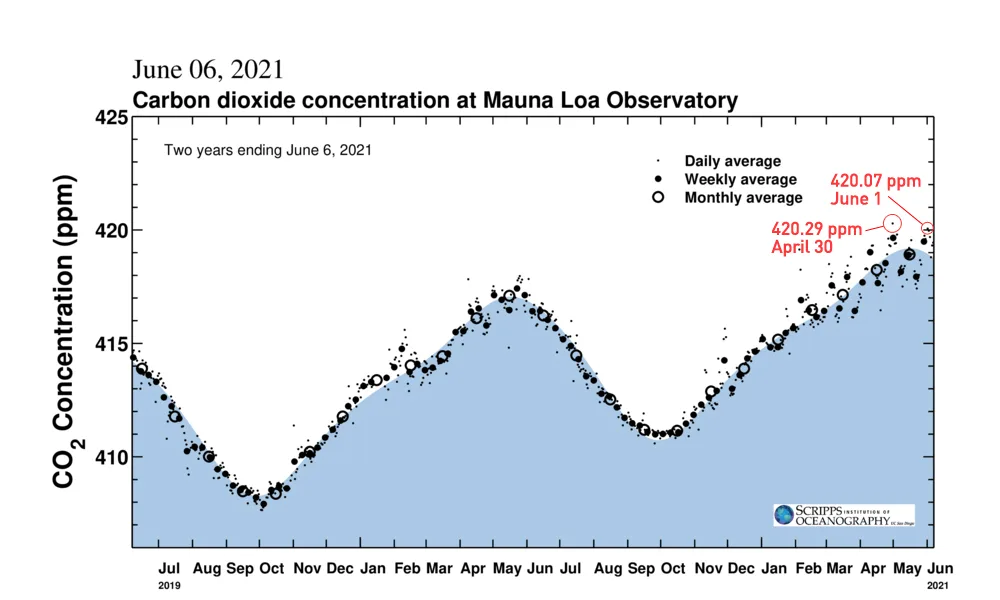
This two-year plot of carbon dioxide measured at Mauna Loa shows the yearly 'saw tooth' pattern that carbon dioxide levels follow due to seasonal changes. In 2019, CO₂ peaked at 415 ppm and in 2020, daily averages reached 418 ppm. In 2021, 420.29 ppm is the new daily record, set on April 30, with another 420.07 ppm measurement logged on June 1. Credit: Scripps Institution for Oceanography/Scott Sutherland
Based on studies of ice cores, and other proxies such as tree rings, this is also likely the highest level seen on Earth in roughly 3.6 million years.
Amid this, month by month, global temperatures tracked within the top ten warmest on record. 2021 is now expected to come in as the 5th or 6th hottest year since record-keeping began, over 140 years ago.
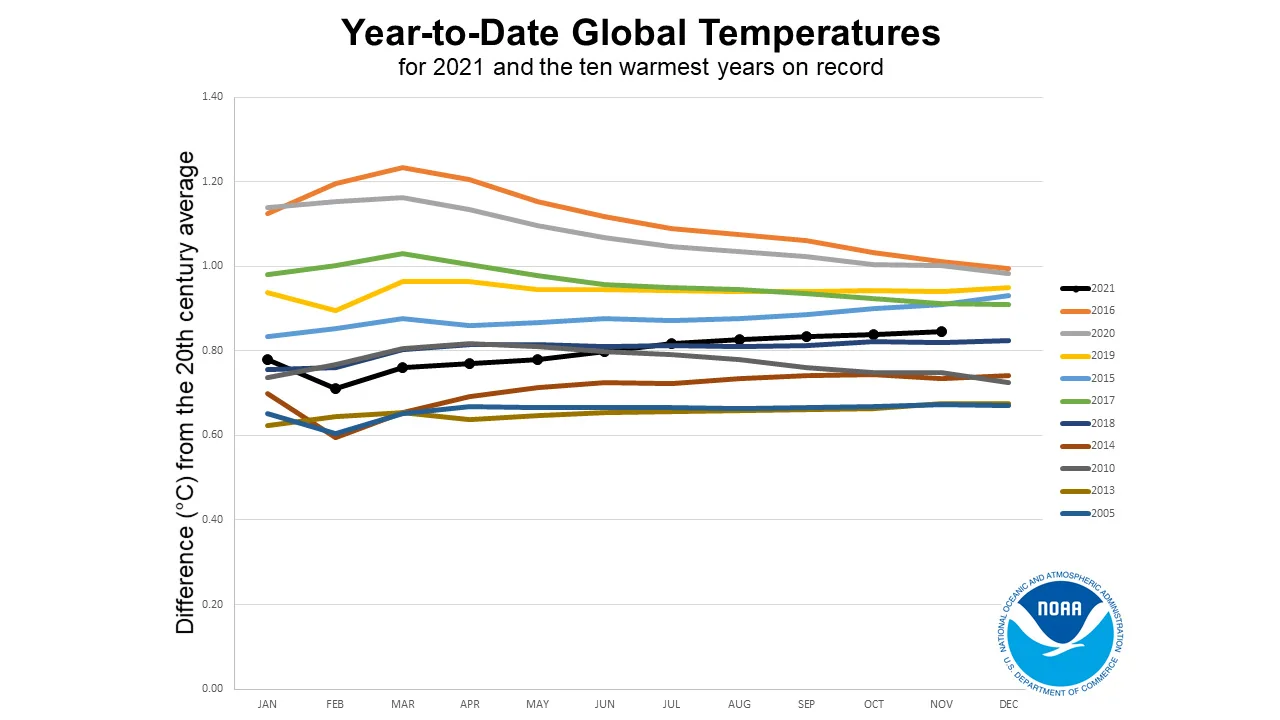
*This "horserace" graph of year-to-date global temperatures ranks the current year against the top ten warmest years in the record books. The influence of two back-to-back La Nina events in the equatorial Pacific Ocean has kept this year slightly cooler than the last few. Credit: NOAA
The impacts of climate change played out in the news headlines over this past year, with numerous record-shattering weather events experienced around the world. Canada, for its part, was not exempt from these impacts.
COLDEST FEBRUARY SINCE 1994
With an unusually warm start to the year, North America then transitioned into one of the coldest Februarys seen in the past 27 years. While the Arctic air froze much of western Canada, the frigid winter conditions also reached all the way south to Texas!
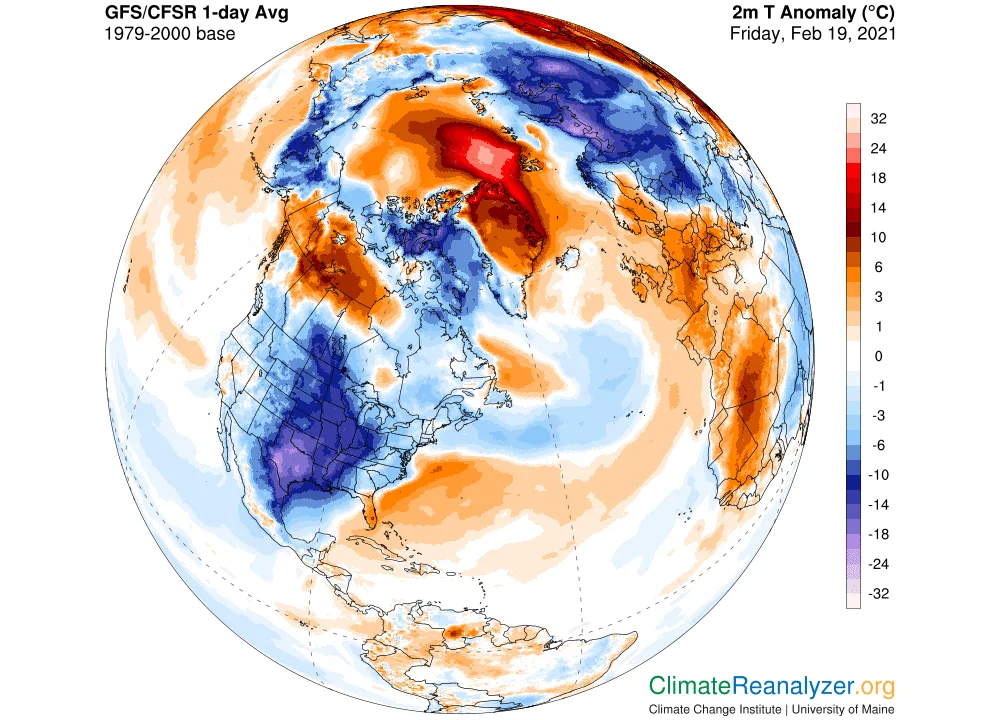
This surface temperature map shows the extent of the cold over North America on February 19, 2021. Credit: Climate Reanalyzer/University of Maine.
"For much of December and January, the Pacific jet stream remained turbocharged, flooding the continent with mild air," Tyler Hamilton, meteorologist with The Weather Network, wrote as he analyzed how the extreme cold could reach that far south.
According to Hamilton, it was an abrupt change in the flow of the jet stream around the Arctic that started this march of deeply frigid temperatures down across the continent. With the persistent low pressure over the Arctic from December through January giving way to high pressure in February, this allowed the jet stream to meander far to the south, carrying that cold polar air along with it.
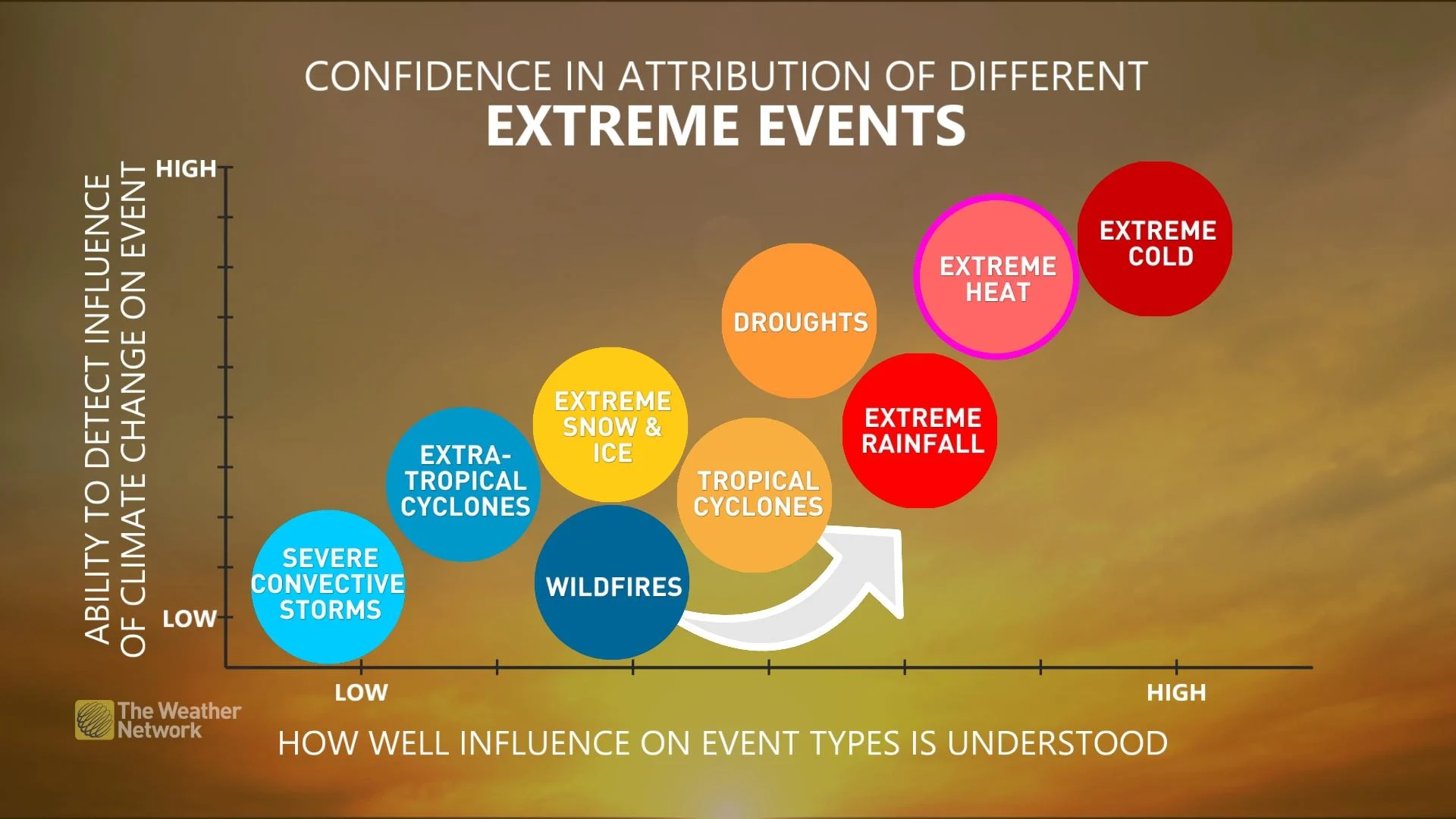
As shown in the graph above, the influence of climate change on extreme cold events is one of the easiest to detect and best understood aspects of the science.
EXTREME WESTERN HEAT
In June of this year, the west coast of North America was trapped under one of the most extreme heat waves the region has ever experienced.
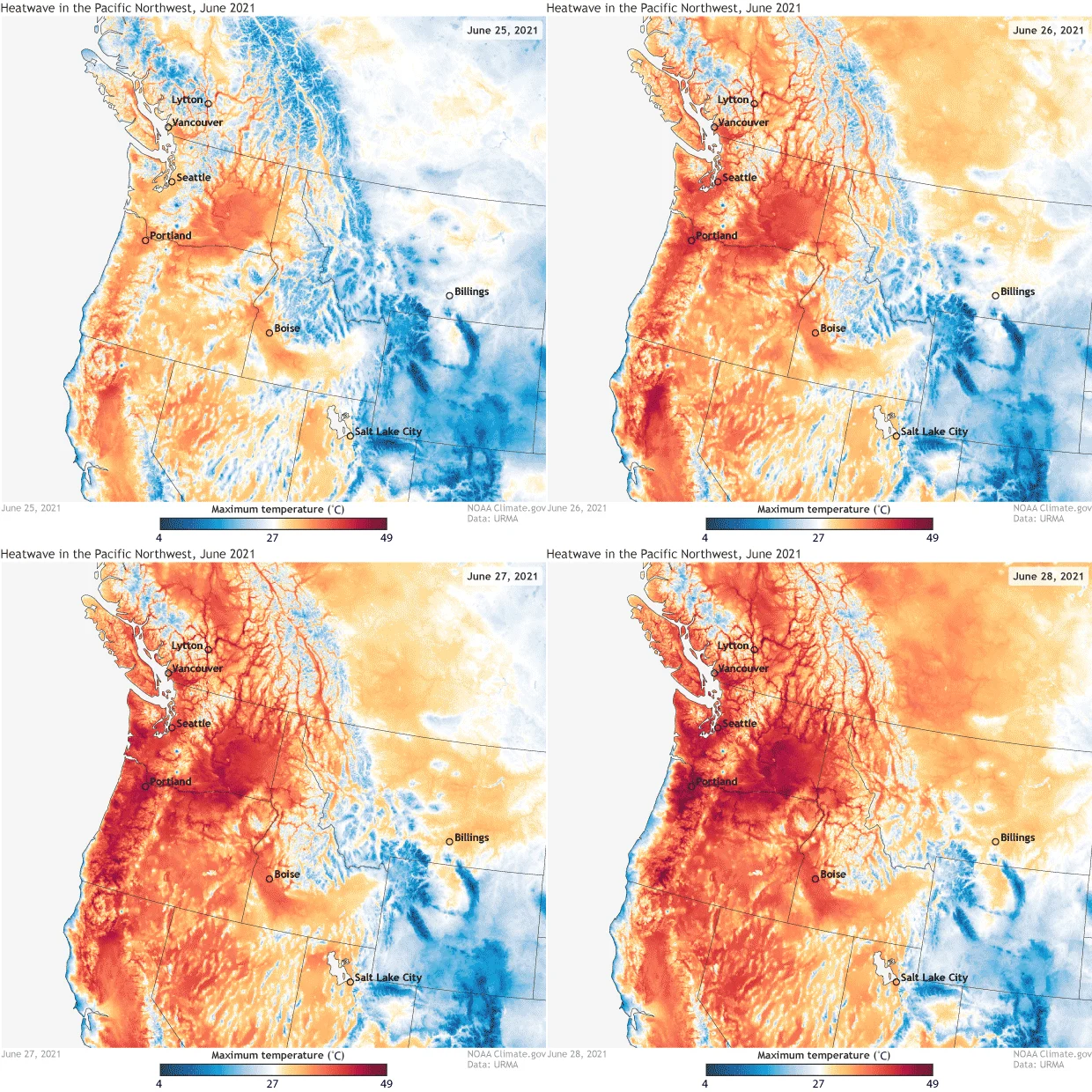
The WMO says that the Pacific Northwest heat wave in June of 2021 was virtually impossible without the influence of climate change. Credit: NOAA Climate.gov
Among the new all-time temperature records set during this event, on June 27th, the village of Lytton, B.C., logged a daily high of 46.6°C. This was followed by a high of 47.9°C the day after, and 49.6°C the day after that. All three of those beat out the previous record, set back in 1941, with the June 30 temperature exceeding that record by over 5 degrees!
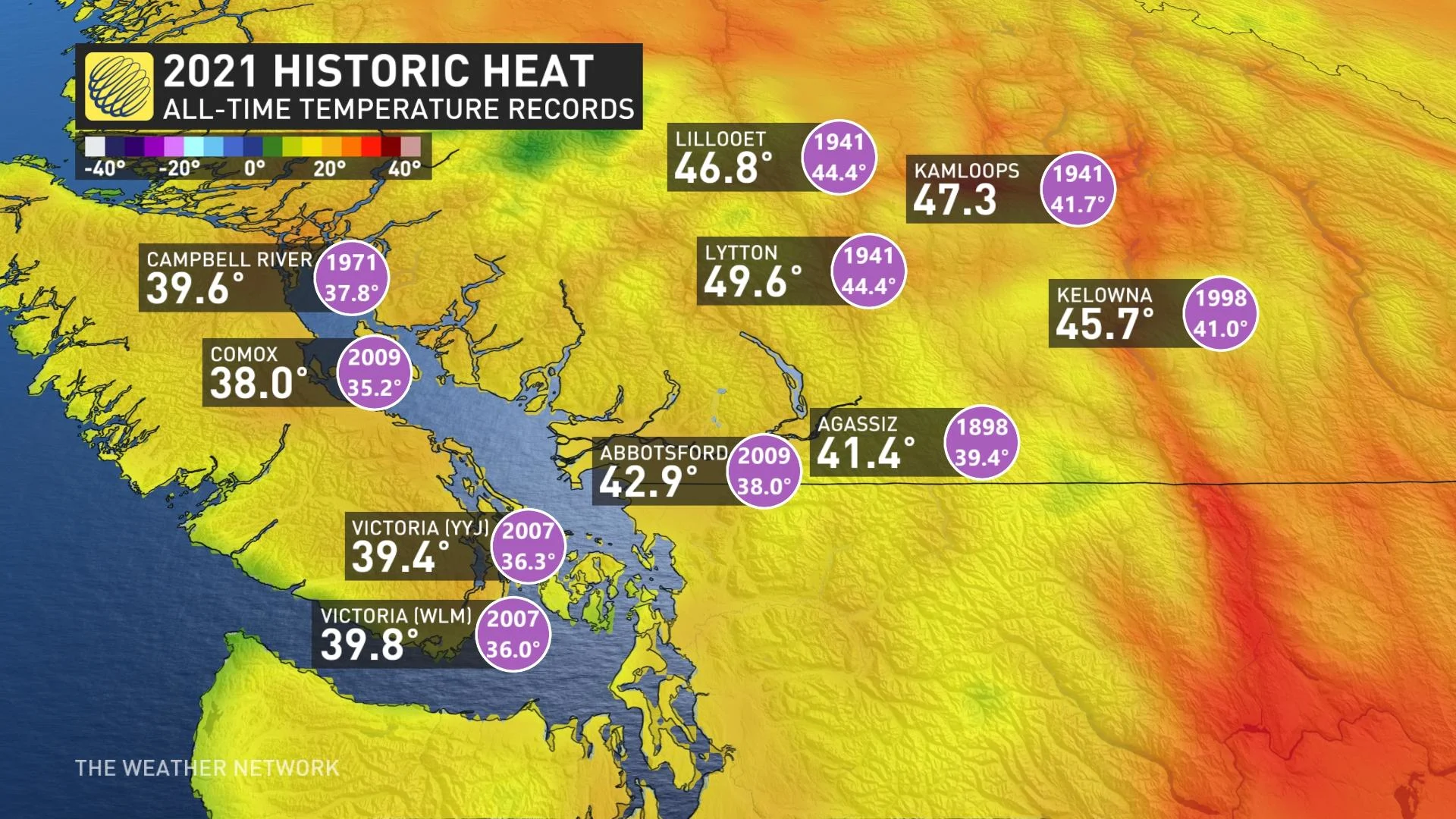
By the end of the day on June 30, the village of Lytton would effectively be gone, as nearly every building in the community burned to the ground in a wildfire that swept through the area.
As reported at the time, this heat wave would have been "virtually impossible" without the influence of human-caused climate change.
ONTARIO BECOMES A GLOBAL HOTSPOT
On a global scale, the month of October 2021 came in as the 4th warmest October in NOAA's and NASA's record books. More regionally, Canada was one of the hottest countries in the world for that month.
This was especially true for eastern and northern Canada, which saw some record-breaking warmth during the month. In southern Ontario, for more than a week around the Thanksgiving weekend, temperatures soared up into the mid-to-high 20's, making it feel more like summer than mid-fall.
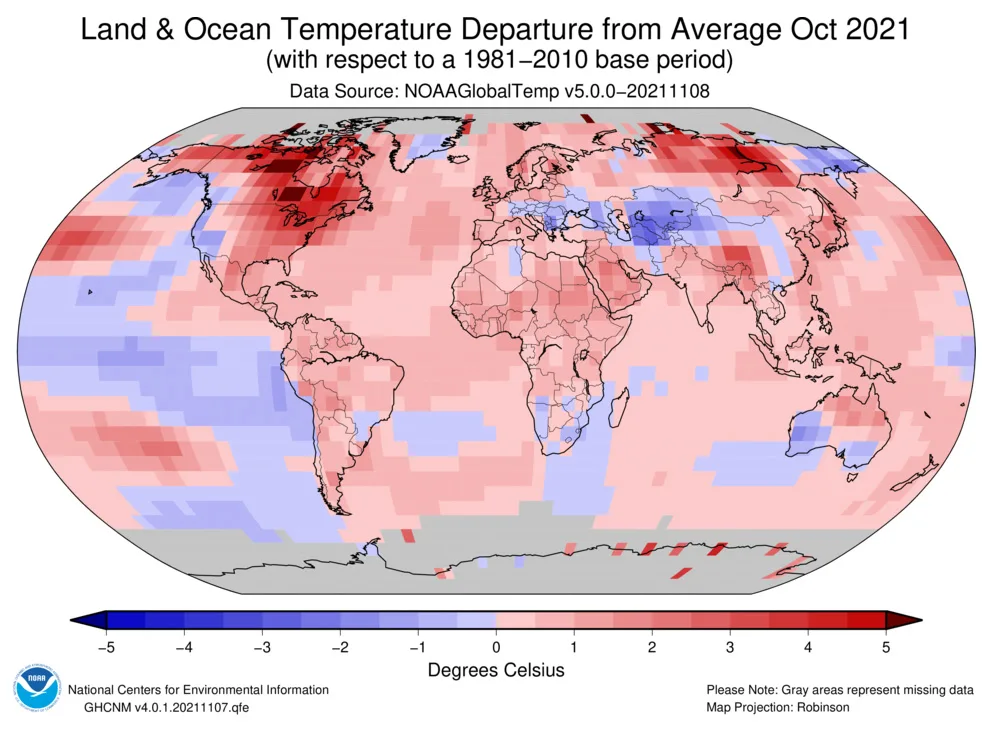
This map of global average temperatures for October 2021 shows the relative hot spots and cool spots on the planet during the month. The cooler sea surface temperatures across the central Pacific Ocean note the presence of a La Nina pattern there, while eastern Canada and central Siberia are the hot-spots for the globe. Credit: NOAA NCEI
"According to Meteorological Service of Canada, Ontario (located in eastern Canada) had October temperatures that were 3.0–6.0°C above average," NOAA stated in their report. "During October 7–15, several locations across Ontario had maximum temperatures above 20°C."
AN UNCERTAIN FUTURE
Canada is one of the fastest warming nations in the world, with temperatures rising two to three times faster than the global average. As such, we are seeing some of the largest impacts of the climate crisis, and unless humanity acts to curb fossil fuel consumption and limit global warming, we are in for a very uncertain future.
At 2021's COP26 climate summit, governments proposed more ambitious commitments to reduce greenhouse gas emissions. Additionally, new "net-zero" pledges were introduced, which will involve the use of technologies and offsets to hopefully bring carbon emissions under control much more quickly. As a result, the latest assessments of all the world's commitments determined — for the first time since these meetings began — that we now have a chance to keep global warming to less than 2°C.
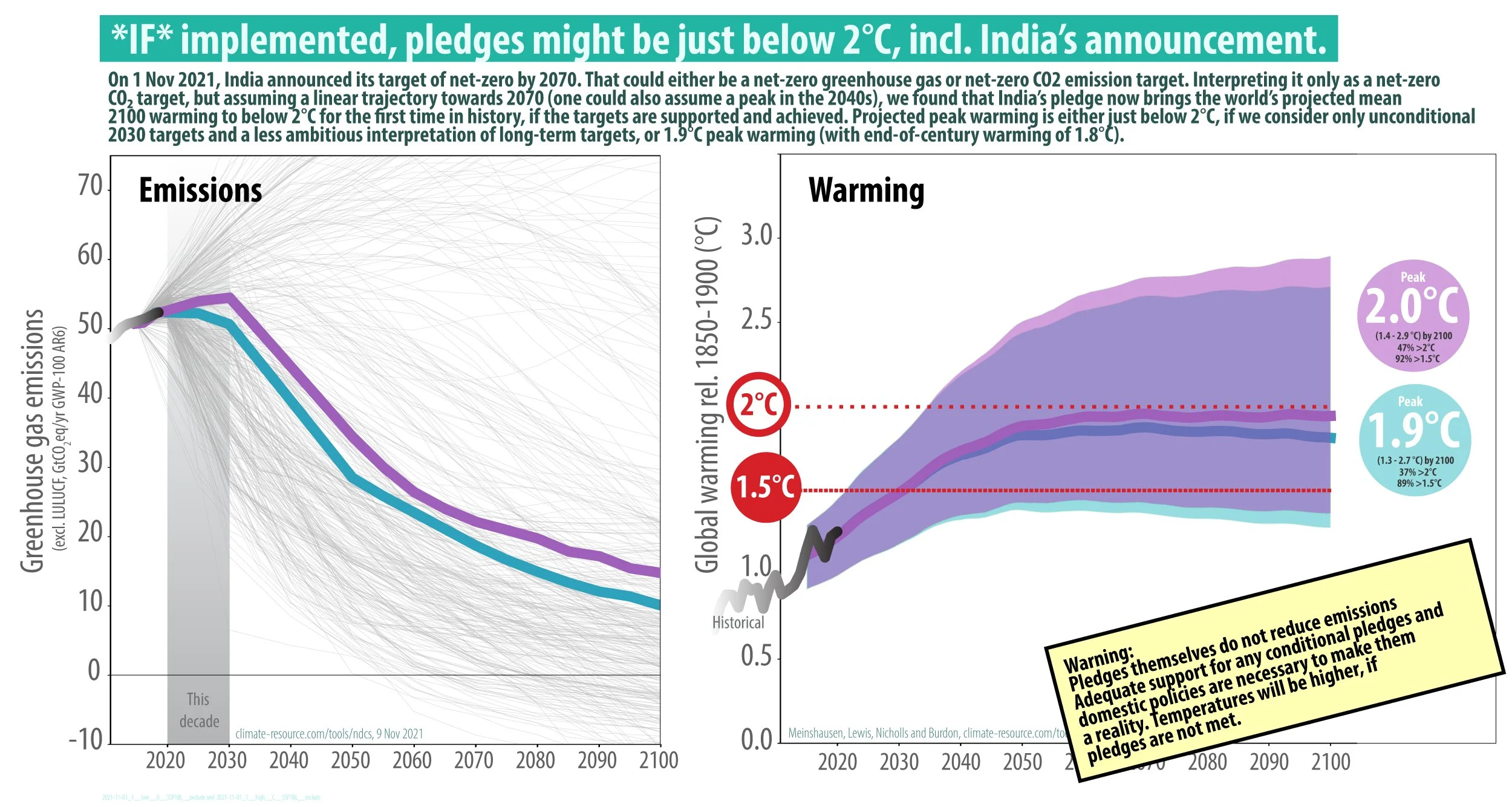
This comparison of emissions and warming projections, based on the COP26 commitments so far, is accompanied by a critical warning label. Credit: Climate Resource
This assessment has some big uncertainties associated with it. Perhaps the biggest of these is whether or not world governments will actually follow through on their commitments. Still, it shows some progress over previous meetings.
The unfortunate part is that, unless we manage to eke out a best-case scenario from among all the possible outcomes, it appears as though limiting warming to just 1.5°C is still not possible. While this was identified as a much more ambitious goal of the 2015 Paris Agreement, when global temperatures exceed that limit in the decades ahead, it won't just be Pacific atolls that feel the impacts.
That level of warming on the global scale will still mean at least a 3°C rise in temperatures for Canada, on average. Northern regions of the country will warm even more. This will have noticeable impacts on heat waves, droughts, wildfires, storms, snowfall and rainfall rates. Farther north, we will see continued permafrost loss and Arctic greening, and a recent study revealed a worrisome shift in precipitation from snow to rain across the Arctic, which would make an already unfortunate situation even worse.












